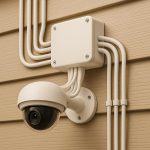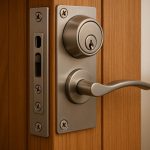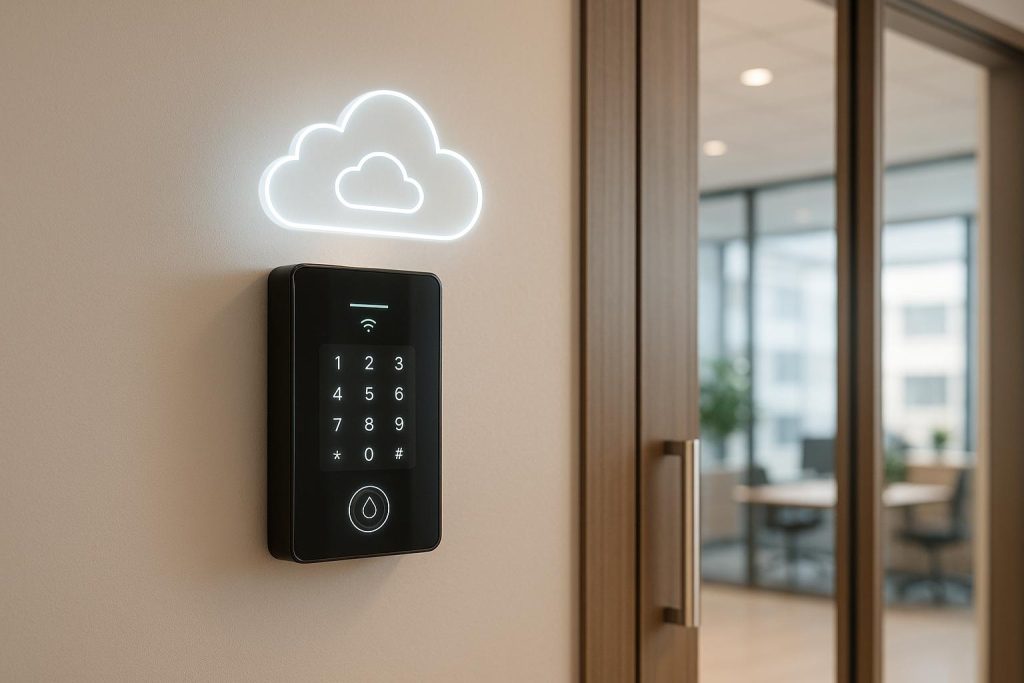Cloud-based access control systems are transforming security in 2025, offering remote management, real-time monitoring, and seamless integration with other tools. Here’s a quick look at the top five systems:
- Gatewise: Affordable pricing with strong integration capabilities, including property management software and voice assistants.
- Swiftlane: Smartphone-based access and scalable solutions tailored to building-specific needs.
- ButterflyMX: Combines video intercom features with advanced access management, offering transparent pricing and strong software integrations.
- Brivo: Enterprise-focused with robust reporting tools, mobile access, and API integrations for large-scale operations.
- Openpath: User-friendly design with per-user pricing, touchless entry, and advanced system integration.
Quick Comparison
| System | Pricing Model | Monthly Cost Range | Key Features |
|---|---|---|---|
| Gatewise | Custom quotes + discounts | Custom pricing | Voice assistant compatibility, integrations |
| Swiftlane | Custom pricing + subscriptions | $49–$60 | Smartphone access, scalable for buildings |
| ButterflyMX | Hardware + per-unit monthly | $10–$30/unit | Video intercom, real-time monitoring |
| Brivo | Custom enterprise pricing | $50–$100/door | Detailed reporting, large-scale integrations |
| Openpath | Per-user subscription | $8–$15/user | Touchless entry, workplace tool integrations |
These systems cater to various needs, from small businesses to large enterprises. Consider factors like property size, budget, and integration requirements to choose the right one. Professional installation and ongoing support, like those offered by Sherlock’s Locksmith in Pittsburgh, ensure optimal performance.
Openpath: Advantages of a Cloud-Based Access Control Solution
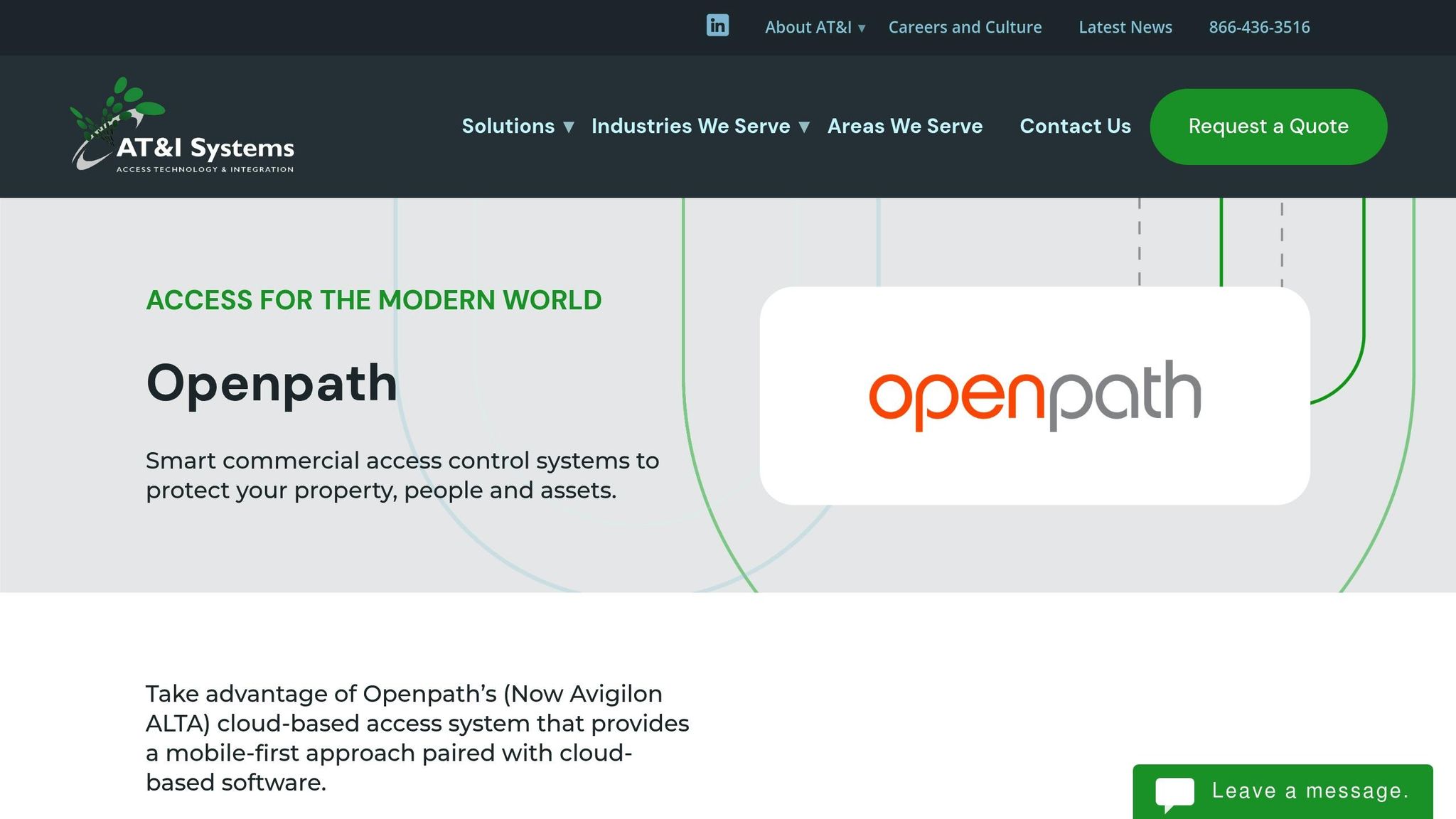
What Are Cloud-Based Access Control Systems
Cloud-based access control systems use cloud-hosted data and processing to secure buildings, allowing users to manage access remotely through smartphones or computers. This technology marks a shift from traditional setups, paving the way for the advanced features modern systems offer.
One of the biggest advantages is how these systems address the challenges of traditional access control. Unlike older setups that require on-site servers, cloud-based solutions cut down on installation costs and make scaling much simpler.
With remote management, property managers can grant or revoke access instantly, no matter where they are, using just their smartphones. This convenience is a game-changer for maintaining security on the go.
Real-time monitoring is another key feature. These systems can send immediate alerts when doors are accessed, left open, or even forced. Notifications often include details like timestamps, user IDs, and specific locations, enabling security teams to act quickly in response to potential breaches.
Scalability and reliability are built into cloud-based systems. Businesses can expand their security networks without needing additional hardware, and reputable providers ensure uptime and redundancy, so operations stay secure as companies grow.
Integration is where these systems truly shine. They’re designed to work seamlessly with other security tools, such as cameras, alarm systems, and visitor management platforms. They can also connect with business software like Microsoft Active Directory or Google Workspace, creating a unified and efficient security setup.
When selecting a cloud-based access control system, several features can make a big difference. Look for an intuitive interface, a strong mobile app, and support for various access methods like key cards, PINs, biometrics, and smartphones. These features not only reduce training time but also adapt to different security needs.
For organizations in regulated industries, compliance tools are essential. Built-in features can help healthcare facilities meet HIPAA standards or enable financial institutions to maintain detailed audit trails and reporting without investing in costly customizations.
1. Gatewise
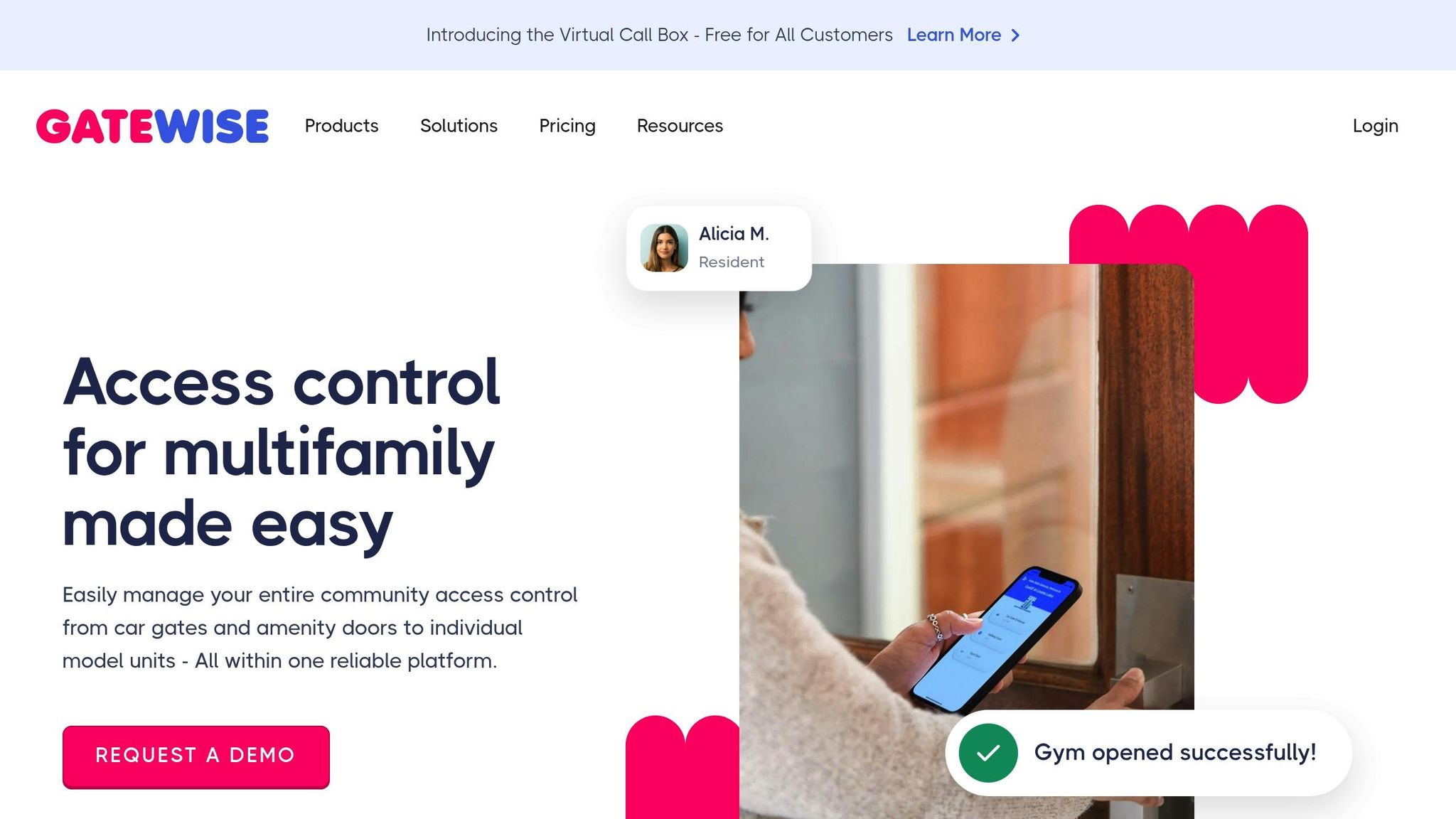
Gatewise is a cloud-based access control system designed to work effortlessly with various technologies.
Integration Capabilities
Gatewise connects seamlessly with surveillance cameras, alarm systems, and smart home devices, making it a versatile choice for property managers. It also integrates with leading property management software like Resman, Entrata, Yardi, and RealPage to streamline operations and enhance convenience. On top of that, Gatewise supports voice commands through assistants like Siri and Google Assistant, allowing users to operate smart locks with simple phrases like "Hey Siri" or "Hey Google".
These integrations simplify workflows and improve overall efficiency, while its transparent pricing structure adds to its appeal.
Pricing
Gatewise uses a per-unit pricing model, with an optional integration fee of $0.25 per unit per month for property management software.
2. Swiftlane

Swiftlane is a cloud-based access control system designed to meet today’s security needs. With its centralized dashboard, property managers can easily oversee access points, modify user permissions, and review access logs in real time. But the platform’s functionality doesn’t stop there.
One standout feature is the ability for users to unlock doors using their smartphones. This digital solution simplifies daily access management, making it both convenient and efficient.
Swiftlane also integrates smoothly with building management systems, ensuring consistent application of security policies across multiple properties. Whether it’s a small facility or a sprawling commercial complex, the platform is built to scale to fit various needs.
3. ButterflyMX
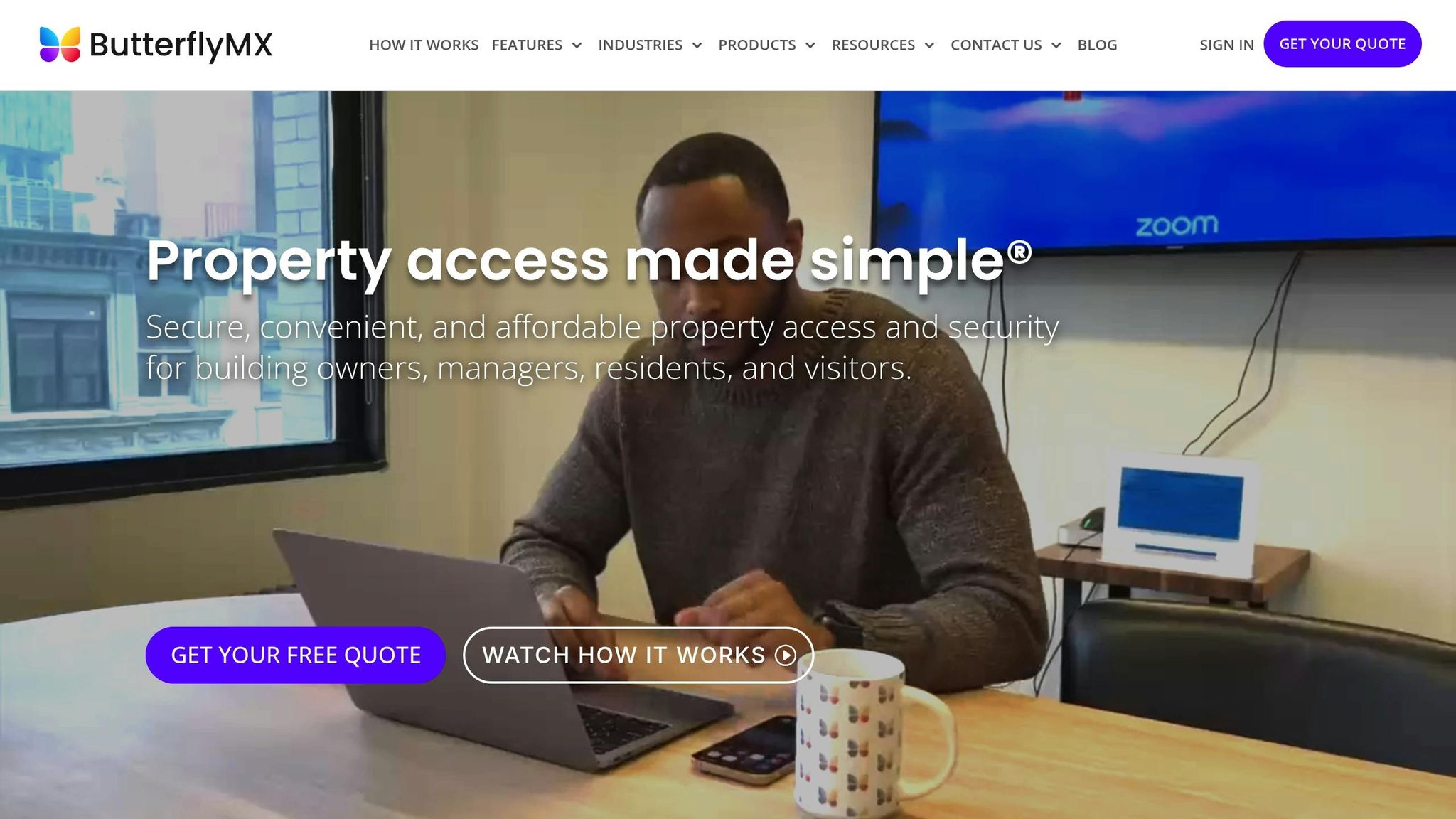
ButterflyMX offers a cloud-based access control system that combines video intercom features with advanced access management tools, making it a smart choice for modern building security.
Cloud Management Features
With its cloud dashboard, ButterflyMX allows property managers to oversee multiple buildings with ease. They can monitor access activity, review detailed logs (showing timestamps, user IDs, and entry methods), and generate reports – all updated in real time and accessible across devices.
Mobile Access and Touchless Entry
ButterflyMX simplifies access with its mobile app, enabling touchless entry and instant door unlocking. It also supports QR codes for temporary access and includes video calling for remote visitor verification. This flexibility ensures residents can grant entry to guests or accept deliveries, even when they’re not home.
System Integration
ButterflyMX integrates seamlessly with popular property management software like Yardi, RealPage, and AppFolio, automatically syncing lease and access data. It also connects with smart home and building automation systems, enabling features like automatic lighting, HVAC adjustments, and elevator calls.
Pricing and Flexibility
The system uses a per-unit monthly pricing model, typically ranging from $15 to $25 per unit, depending on the property size and selected features. It’s designed to scale, accommodating everything from small residential buildings to large commercial properties with numerous access points.
ButterflyMX allows for gradual implementation, starting with main entrances and expanding as needed. Its cloud-based setup eliminates the need for on-site servers, reducing both initial and maintenance costs. This makes it a practical and efficient option for properties of all sizes.
4. Brivo
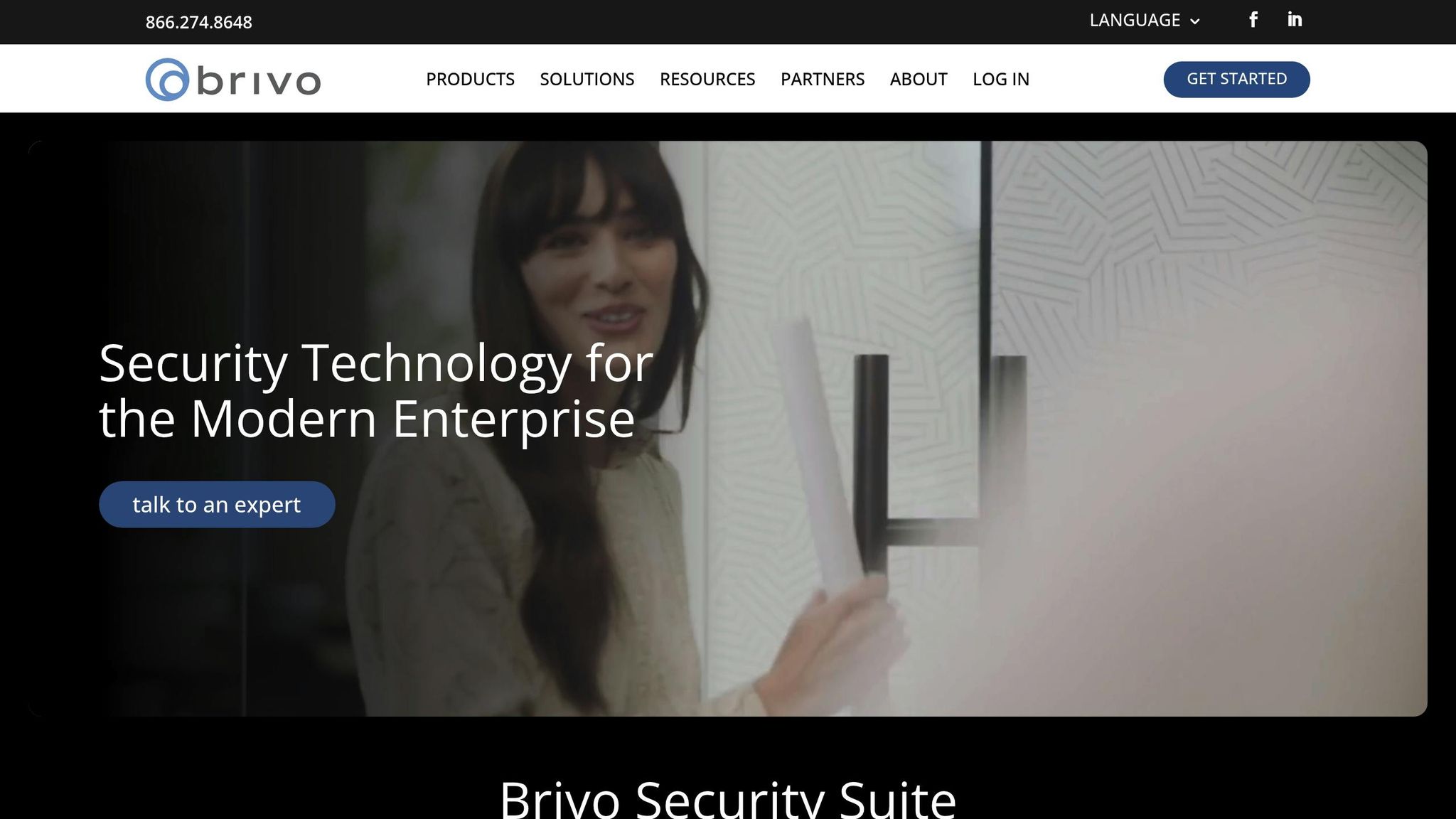
Brivo offers an all-in-one access control solution designed to meet the needs of businesses ranging from small offices to large enterprises. It combines high-level security with a user-friendly, web-based management interface, making it a practical choice for organizations of all sizes.
Cloud Management Features
With Brivo, administrators get access to a centralized dashboard that tracks entry and exit events in real time. It logs detailed audit trails, including user IDs, timestamps, and door locations, while also allowing for the management of credentials, schedules, and security policies across multiple sites.
The platform’s reporting tools are another standout feature. Managers can generate tailored security reports to monitor usage trends or identify potential risks. These reports can be customized by date range, user, or access point, which simplifies compliance checks – especially for businesses in regulated industries.
Mobile Access and Touchless Solutions
Brivo’s mobile app transforms smartphones into virtual keys, eliminating the need for traditional key cards or fobs. Users can unlock doors with the app, and the system supports Bluetooth and mobile credentials for hands-free access when approaching secure areas.
For managing visitors, Brivo provides temporary mobile credentials that can be sent directly to a guest’s smartphone. These credentials are time-restricted and can be limited to specific areas, giving businesses precise control over guest access while maintaining a seamless and professional experience.
System Integration Capabilities
Brivo integrates smoothly with a variety of third-party systems, including video surveillance platforms, elevator controls, and building management systems. Its API integrations enable businesses to connect Brivo with their existing security infrastructure and other key business applications.
For example, HR and employee management software can automatically update access permissions when employees are hired, change roles, or leave the company. This automation reduces administrative workload and minimizes the risk of security gaps during personnel transitions. Brivo’s integration-friendly design ensures businesses can scale their security operations without complications.
Pricing and Growth Potential
Brivo uses a per-door, per-month pricing model, with costs typically ranging from $50 to $100 per door, depending on the selected features and total number of access points. This pricing includes cloud hosting, software updates, and basic technical support, making it easier for businesses to plan their budgets.
The system is highly scalable, whether you’re managing a single door or hundreds of access points across multiple locations. Its cloud-based design eliminates the need for on-site servers, reducing upfront hardware expenses and ongoing IT maintenance. Adding new doors or locations is straightforward and doesn’t require hefty infrastructure investments, making it an excellent option for businesses planning to grow.
sbb-itb-643e28e
5. Openpath
Openpath stands out with its user-friendly design and strong security features. By combining stylish hardware with powerful cloud-based management, it appeals to businesses looking for a seamless blend of functionality and visual appeal in their security systems.
Cloud Management Capabilities
Openpath provides a centralized, web-based dashboard that simplifies access management. This dashboard logs entry details – like user IDs, timestamps, and locations – across all facilities, giving security teams a clear view of activity. With this setup, teams can quickly identify and respond to unusual access attempts.
One of Openpath’s key features is real-time notifications. Administrators can receive alerts for events such as forced door openings, tailgating, or after-hours access attempts. These notifications can be tailored to match specific security policies and delivered via email or mobile push notifications. The system also maintains detailed audit trails, ensuring compliance with regulatory requirements.
Another advantage is Openpath’s automatic cloud updates, which handle software upgrades and security patches without IT intervention. This low-maintenance approach reduces the workload for internal teams while keeping the system up-to-date and secure.
Mobile Access and Touchless Entry
With Openpath, smartphones become digital keys. Its mobile app supports both tap-to-unlock and hands-free Bluetooth unlocking, eliminating the need for physical keycards.
For visitors, businesses can issue time-limited, area-specific digital credentials directly from the dashboard, offering precise control over guest access without the hassle of distributing physical keys.
The system’s touchless entry options, including Wave to Enter technology and smartphone-based unlocking, gained particular relevance during health-conscious times. These features allow users to enter without touching door handles or keypads, offering convenience and hygiene.
Integration with Other Systems
Openpath integrates seamlessly with various systems to provide a more comprehensive security solution. For example, it connects with video surveillance systems, enabling administrators to link access events with video footage for better monitoring and incident investigation.
It also works with workplace tools like Slack and Microsoft Teams, sending automated notifications during security events to improve communication. Additionally, HR system integrations ensure that access permissions are automatically updated when employees join, change roles, or leave, reducing administrative effort and potential security risks.
Beyond access control, Openpath can integrate with building management systems to coordinate with elevators, lighting, and HVAC systems. This creates a unified smart building experience, enhancing overall operational efficiency.
Pricing and Scalability
Openpath operates on a subscription model, charging between $8 and $15 per user per month. For organizations with more employees than access points, this pricing model is often more economical than traditional per-door models.
The system is designed to scale effortlessly, whether for small offices or large enterprises. Expanding to new locations or adding facilities is simple with the centralized management platform.
For growing businesses, this scalable pricing ensures that costs increase predictably with the number of users, avoiding large upfront investments when adding access points. This flexibility makes it easier for companies to plan and manage their security budgets as they grow.
Features and Pricing Comparison
This section dives into the key features and pricing models of five cloud-based access control systems, highlighting their unique approaches to functionality and cost structures. Each platform caters to specific business needs, making it essential to evaluate both features and pricing side by side.
Pricing Models and Key Features
Pricing structures differ significantly across these platforms:
- Gatewise emphasizes straightforward pricing with custom quotes based on the number of units and access points. They also offer discounts for longer subscription terms – 8% for one-year contracts and 16% for two years. Gatewise promotes itself as offering "the most affordable access control solution in the market."
- Swiftlane provides tailored solutions, with pricing dependent on building-specific needs. Their video intercom systems require custom quotes, with hardware and installation costs ranging from $1,800 to over $9,000. Monthly subscriptions start at $49 to $60, described as comparable to traditional telephone line intercom costs.
- ButterflyMX offers detailed cost transparency. Hardware costs range from $2,500 to $7,000+ per intercom unit, with installation fees between $200 and $1,500, depending on the building’s complexity. Monthly subscriptions range from $10 to $30 per unit. Their video intercom systems are priced between $1,500 and $3,000 per unit.
- Openpath uses a per-user subscription model, charging $8 to $15 per user per month. This setup can be cost-effective for businesses with a high number of employees compared to access points, as costs scale with users rather than hardware.
- Brivo focuses on enterprise-level solutions with custom pricing. While specific costs are not disclosed, their offerings are tailored to meet the needs of larger organizations.
| System | Pricing Model | Monthly Cost Range | Hardware Cost | Key Advantages |
|---|---|---|---|---|
| Gatewise | Custom quotes + discounts | Custom pricing | Not specified | Affordable claims; subscription discounts |
| Swiftlane | Custom pricing + subscriptions | $49–$60/month | $1,800–$9,000+ | Traditional intercom comparison |
| ButterflyMX | Hardware + per-unit monthly | $10–$30/unit/month | $2,500–$7,000+ per unit | Transparent pricing |
| Brivo | Custom enterprise pricing | Not disclosed | Not specified | Enterprise-focused solutions |
| Openpath | Per-user subscription | $8–$15/user/month | Not specified | Scales with users; predictable costs |
Key Considerations
Mobile Access and Touchless Entry
All platforms now feature mobile access, with varying implementations. Touchless entry options, often smartphone-based, have become standard for enhancing convenience and user experience.
Scalability
Scalability is a critical factor. Systems like Openpath, with per-user pricing, allow businesses to expand gradually without significant hardware investments. On the other hand, per-unit models, such as ButterflyMX, involve higher upfront costs for each additional access point – an important consideration for businesses planning multi-location growth.
Value Based on Business Needs
The choice of pricing model often depends on the size and structure of the organization. Small businesses may benefit from the predictability of per-user pricing, while larger enterprises with fewer employees per location might find per-unit models more cost-effective. Gatewise and Swiftlane’s custom pricing options add flexibility but require consultation to determine exact costs.
Understanding these pricing approaches and feature sets is essential for selecting the right system to match your business’s scale and needs. Subscription terms also vary; for instance, Swiftlane offers opt-out options, while others require ongoing fees.
How to Choose the Right System
Picking the right cloud-based access control system goes beyond comparing features and prices. It’s about understanding your business’s unique needs, from integration to scalability. Here’s what to consider:
Property Type and Size
The kind of property you manage plays a big role in determining the best system for you. For instance, multi-tenant residential buildings often benefit from systems with strong video intercom and visitor management capabilities to handle multiple residents securely. On the other hand, commercial office spaces may need solutions that can grow with an expanding workforce. If you manage multiple locations, look for a system that supports centralized management and easy customization across sites.
Budget and Long-Term Costs
Don’t just focus on the subscription fee. Think about the full cost, including hardware, installation expenses, and the pricing model – whether it’s based on users or units. Also, check if longer subscription commitments come with discounts. Planning for these costs upfront ensures the system remains affordable as your needs evolve over time.
Integration and Compatibility
Your business likely relies on various systems working together. The access control system you choose should integrate smoothly with tools like building management systems, HR platforms, and other security infrastructure. Confirming compatibility with your current setup ensures everything works together without a hitch, saving time and avoiding headaches.
Room for Growth
As your business expands, your access control requirements will change. Look for systems that can grow with you – whether that’s adding more users, locations, or access points. Ideally, these changes should be simple to implement without requiring extensive professional help every time.
Installation and Support
Some systems are easy to set up, while others need professional installation. Whichever you choose, prioritize providers that offer dependable technical support and training. This ensures your system remains secure and functions smoothly over time.
Taking the time to evaluate these factors will help you avoid disruptions and choose a system that grows with your business.
Sherlock’s Locksmith and Cloud Access Solutions
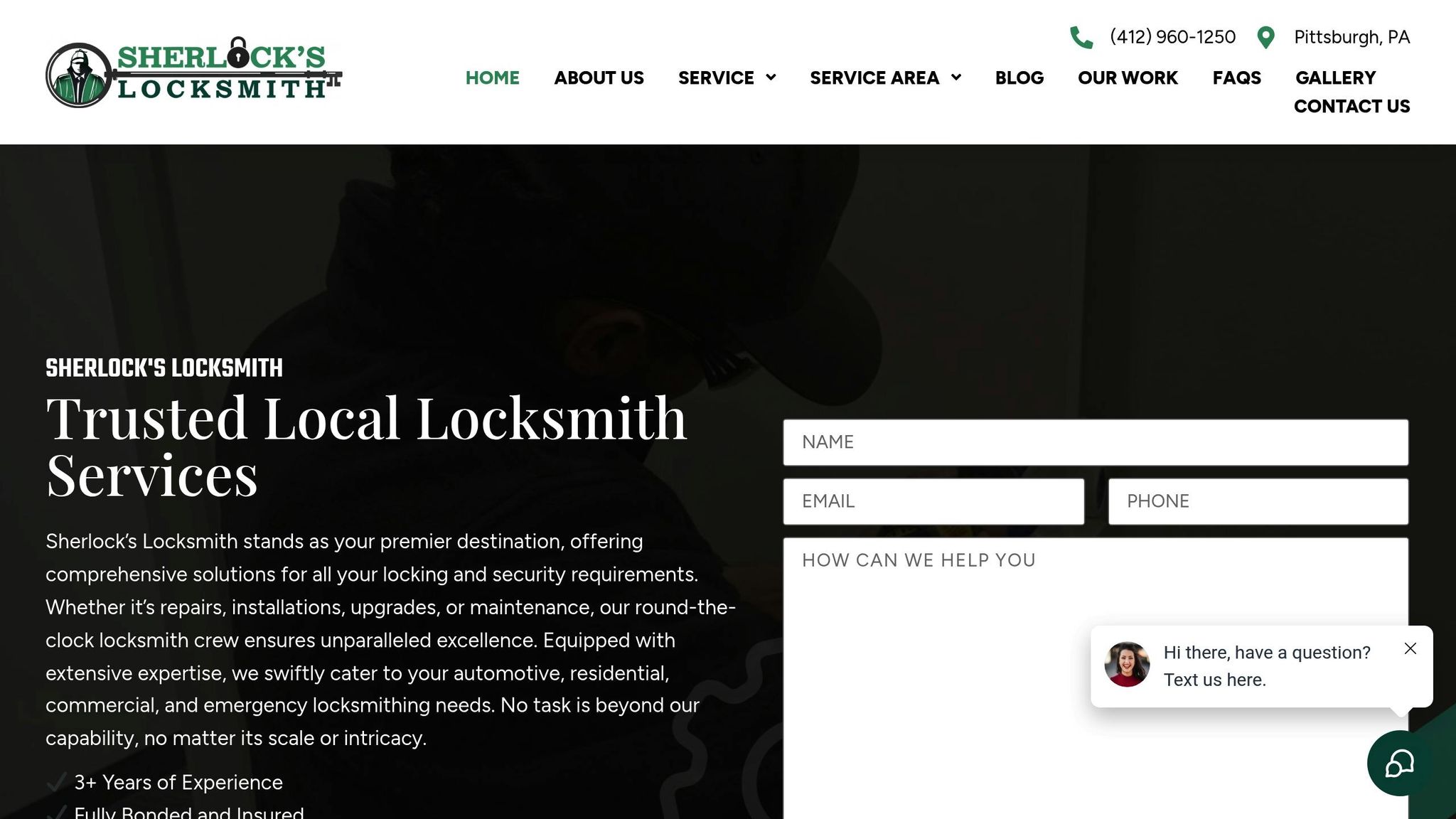
Choosing the right cloud-based access control system is just the beginning. Proper installation and upkeep are what ensure it works smoothly every day. That’s where Sherlock’s Locksmith steps in. With over three years of experience, they’ve been a trusted name for security system installation and maintenance in Pittsburgh, PA, and nearby areas.
Professional Installation and Seamless Integration
Installing a system isn’t just about putting up hardware – it’s about making sure everything functions as a unified whole. Sherlock’s Locksmith specializes in setting up, maintaining, and repairing cloud-based access control solutions. Their certified technicians design systems that can either integrate with your current security setup or work as part of a completely new upgrade.
For businesses with existing security measures, integration is key. Sherlock’s Locksmith connects cloud-based access control systems with tools like video surveillance, alarm monitoring, and visitor management systems. By doing so, they create a cohesive security network where all components work together seamlessly. This holistic approach ensures your security setup isn’t just a collection of isolated systems, but a well-oiled machine.
Comprehensive Service Offerings
Sherlock’s Locksmith provides a wide range of services tailored to both commercial and residential needs:
- For Commercial Clients: They handle everything from programming access control systems with proximity cards and key fobs to installing advanced features like electronic locks, biometric locks, and keyless entry systems. These services are designed to complement cloud-based platforms, giving businesses access to cutting-edge security technology.
- For Residential Clients: Their expertise extends to lock installation, repair, and replacement, ensuring that even homes can benefit from the advanced capabilities of modern cloud-based systems.
Around-the-Clock Support and Emergency Services
Security issues don’t stick to a 9-to-5 schedule, and neither does Sherlock’s Locksmith. Their 24/7 emergency services mean help is always just a phone call away. Whether it’s a malfunctioning lock, a programming glitch with your access cards, or trouble integrating cloud systems with existing hardware, their mobile locksmiths are equipped to handle it quickly and efficiently.
This level of availability is especially crucial for businesses, where downtime can have serious consequences. Their certified technicians prioritize minimizing disruptions, ensuring your security system is back up and running in no time.
Commitment to Quality and Customer Satisfaction
Sherlock’s Locksmith doesn’t just stop at installation and support – they back their work with a warranty, giving clients peace of mind. Fully bonded and insured, they take their responsibility seriously, and their technicians regularly undergo training to stay ahead in an industry that’s constantly evolving.
Their dedication to quality hasn’t gone unnoticed. With a 4.9-star rating from 122 Google reviews, customers frequently commend their professionalism, efficiency, and technical know-how. It’s this combination of expertise and reliability that makes them a go-to partner for even the most complex security installations.
From expert integration to round-the-clock support, Sherlock’s Locksmith delivers the kind of dependable service that cloud-based access control systems demand. For Pittsburgh-area businesses and homes, they’re more than just a locksmith – they’re a trusted ally in building secure, efficient, and modern access solutions.
Conclusion
Cloud-based access control systems have transformed how businesses and property managers approach security in 2025. These systems come with a variety of features to suit different needs, reflecting how security technology continues to evolve.
Selecting the right system involves considering factors like the size of your property, your budget, and the integrations you may need. For instance, a small office might benefit from a simple system focused on basic access management, while a larger enterprise with multiple locations might require advanced reporting and compatibility with third-party tools. Keep in mind that the cheapest upfront option isn’t always the most cost-effective in the long run.
Pricing structures also vary – some systems charge per door, while others use a subscription model based on the number of users, often including hardware and installation costs.
As security technology advances, features that were once considered premium are quickly becoming standard. When evaluating systems, think beyond your current needs and consider how your security requirements might change in the future. This forward-looking approach highlights the importance of choosing a system that can grow with your organization.
Professional installation and ongoing support are critical to getting the most out of any cloud-based access control system. Even the most feature-packed platform won’t be effective if it’s not properly installed or if support isn’t available when you need it. Testing demos and ensuring compatibility with your existing setup can help you make a confident decision. A well-chosen system won’t just enhance security – it can also simplify operations and offer valuable insights into how your property is used. Reliable support, like the services provided by Sherlock’s Locksmith in Pittsburgh, ensures that your investment pays off with long-term security and efficiency.
FAQs
What should large enterprises look for in a cloud-based access control system?
When you’re choosing a cloud-based access control system for a large enterprise, it’s crucial to look for features that allow scalability, remote management, and smooth integration with your current security setup. These capabilities ensure the system can expand alongside your business and adjust to evolving requirements.
Equally important are strong security features like data encryption, multi-factor authentication, and comprehensive audit logs. These not only safeguard sensitive data but also help you stay compliant with industry regulations. Opting for a system with these functions enables enterprises to manage access efficiently while upholding high security standards.
What are the key security and efficiency benefits of cloud-based access control systems compared to traditional ones?
Cloud-based access control systems provide a higher level of security by allowing for real-time remote monitoring, automatic updates to software, and centralized control. These capabilities help minimize vulnerabilities, make access management more efficient, and enable quicker responses when security issues arise.
When it comes to efficiency, these systems remove the need for bulky on-site hardware and tedious manual tasks. They are designed to scale easily as your requirements expand, while automated processes simplify user management. Together, these advantages save both time and money over the long haul.
Why is system integration important for cloud-based access control solutions?
System integration plays a key role in getting the most out of cloud-based access control solutions. By linking access control systems with other tools – like security alarms, HR software, or visitor management platforms – businesses can automate processes, improve security measures, and simplify daily operations.
Take integration with HR systems as an example. When an employee’s role changes, their access permissions can be updated automatically, cutting down on manual tasks and reducing the chance of mistakes. Similarly, connecting access control with alarm systems enables coordinated responses during security incidents, boosting overall protection. These integrations work together to create a connected security network that saves time, lowers risks, and supports a more efficient way of managing facilities.





